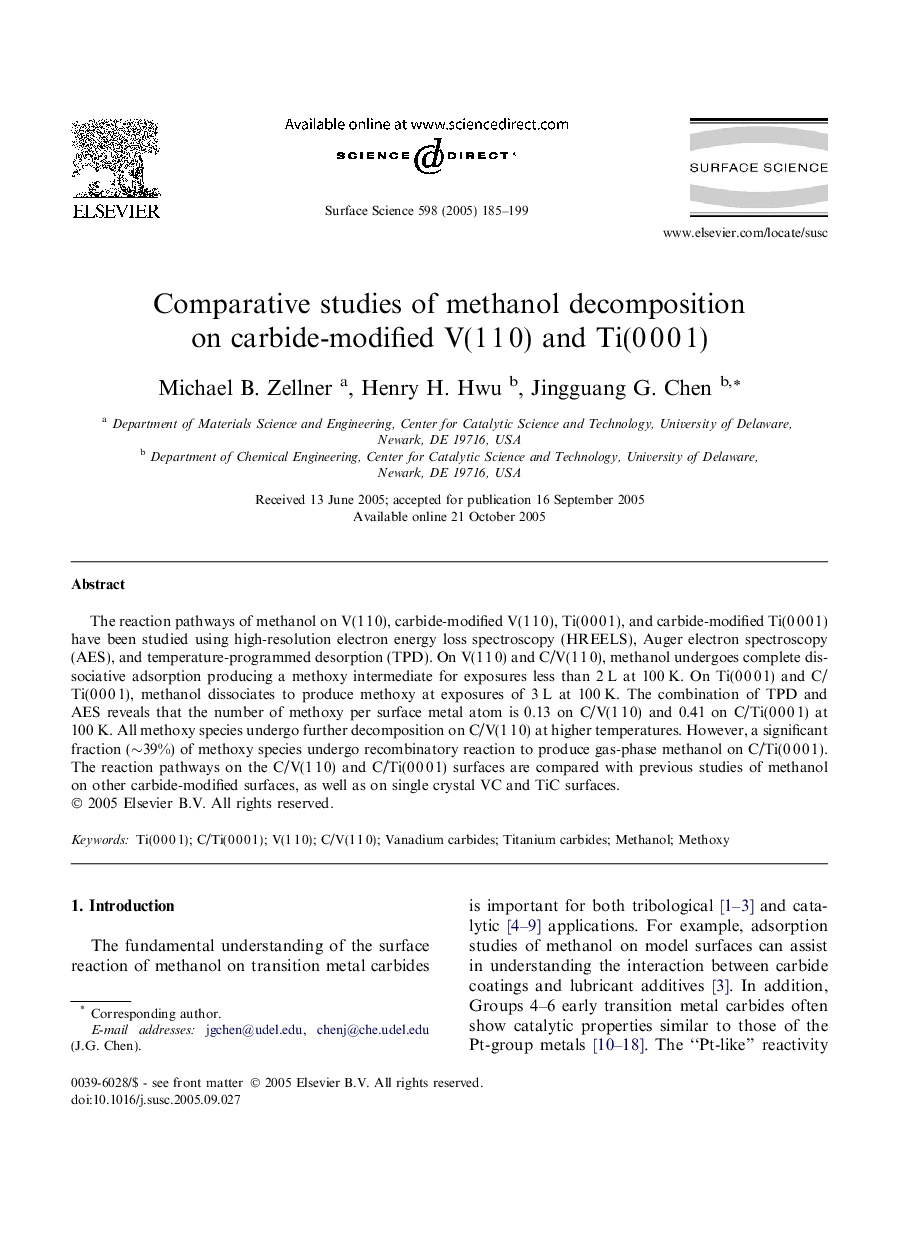| Article ID | Journal | Published Year | Pages | File Type |
|---|---|---|---|---|
| 9595002 | Surface Science | 2005 | 15 Pages |
Abstract
The reaction pathways of methanol on V(1Â 1Â 0), carbide-modified V(1Â 1Â 0), Ti(0Â 0Â 0Â 1), and carbide-modified Ti(0Â 0Â 0Â 1) have been studied using high-resolution electron energy loss spectroscopy (HREELS), Auger electron spectroscopy (AES), and temperature-programmed desorption (TPD). On V(1Â 1Â 0) and C/V(1Â 1Â 0), methanol undergoes complete dissociative adsorption producing a methoxy intermediate for exposures less than 2Â L at 100Â K. On Ti(0Â 0Â 0Â 1) and C/Ti(0Â 0Â 0Â 1), methanol dissociates to produce methoxy at exposures of 3Â L at 100Â K. The combination of TPD and AES reveals that the number of methoxy per surface metal atom is 0.13 on C/V(1Â 1Â 0) and 0.41 on C/Ti(0Â 0Â 0Â 1) at 100Â K. All methoxy species undergo further decomposition on C/V(1Â 1Â 0) at higher temperatures. However, a significant fraction (â¼39%) of methoxy species undergo recombinatory reaction to produce gas-phase methanol on C/Ti(0Â 0Â 0Â 1). The reaction pathways on the C/V(1Â 1Â 0) and C/Ti(0Â 0Â 0Â 1) surfaces are compared with previous studies of methanol on other carbide-modified surfaces, as well as on single crystal VC and TiC surfaces.
Related Topics
Physical Sciences and Engineering
Chemistry
Physical and Theoretical Chemistry
Authors
Michael B. Zellner, Henry H. Hwu, Jingguang G. Chen,
